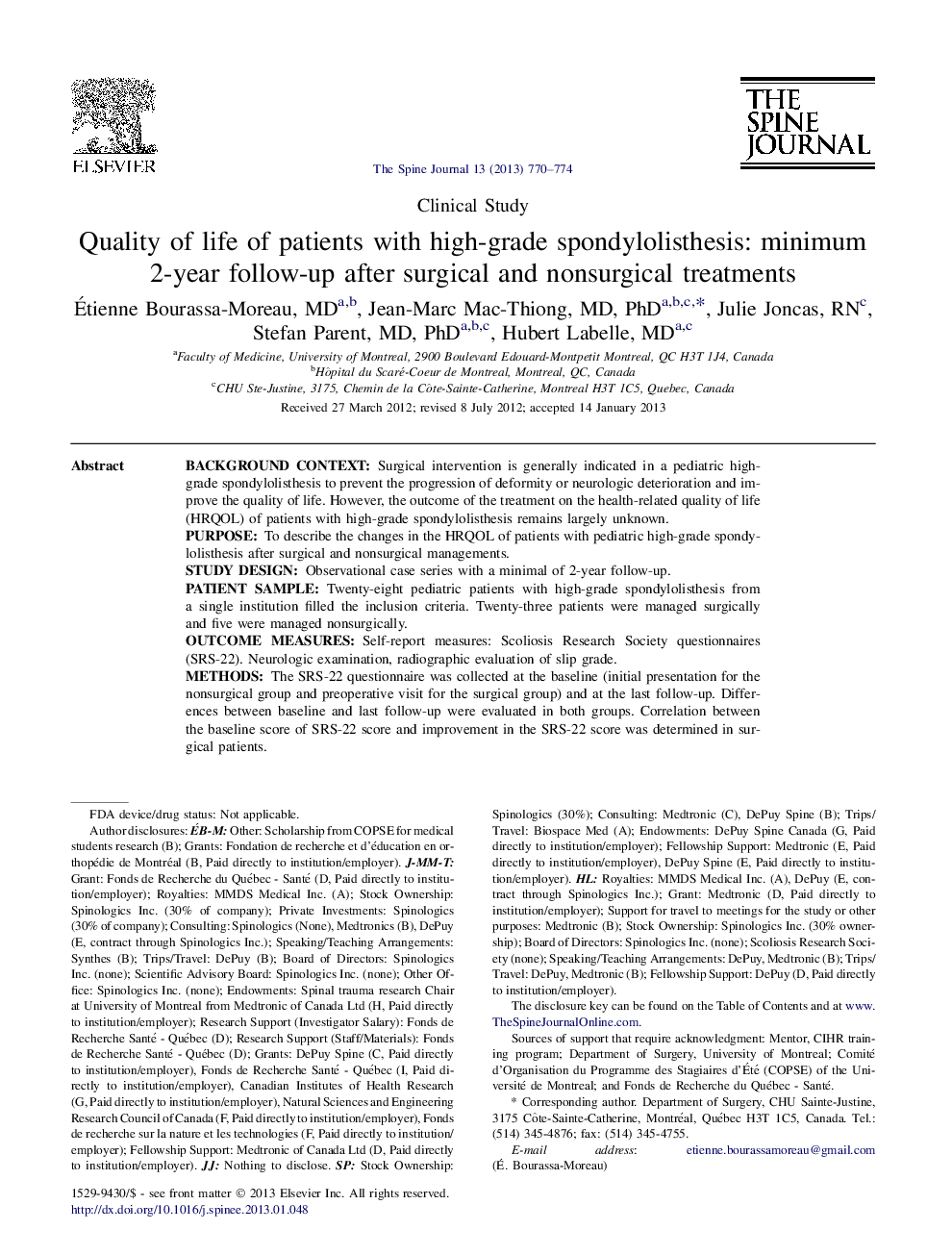| کد مقاله | کد نشریه | سال انتشار | مقاله انگلیسی | نسخه تمام متن |
|---|---|---|---|---|
| 6212552 | 1268581 | 2013 | 5 صفحه PDF | دانلود رایگان |
Background contextSurgical intervention is generally indicated in a pediatric high-grade spondylolisthesis to prevent the progression of deformity or neurologic deterioration and improve the quality of life. However, the outcome of the treatment on the health-related quality of life (HRQOL) of patients with high-grade spondylolisthesis remains largely unknown.PurposeTo describe the changes in the HRQOL of patients with pediatric high-grade spondylolisthesis after surgical and nonsurgical managements.Study designObservational case series with a minimal of 2-year follow-up.Patient sampleTwenty-eight pediatric patients with high-grade spondylolisthesis from a single institution filled the inclusion criteria. Twenty-three patients were managed surgically and five were managed nonsurgically.Outcome measuresSelf-report measures: Scoliosis Research Society questionnaires (SRS-22). Neurologic examination, radiographic evaluation of slip grade.MethodsThe SRS-22 questionnaire was collected at the baseline (initial presentation for the nonsurgical group and preoperative visit for the surgical group) and at the last follow-up. Differences between baseline and last follow-up were evaluated in both groups. Correlation between the baseline score of SRS-22 score and improvement in the SRS-22 score was determined in surgical patients.ResultsIn surgical patients, total SRS-22 scores were 3.31±0.50 at the baseline and 4.26±0.50 at the last follow-up. In nonsurgical patients, total SRS-22 scores were 4.12±0.16 at the baseline and 4.14±0.38 at the last follow-up. Therefore, variation in the SRS-22 total score was +0.94±0.77 (p<.001) for surgical patients and +0.02 ± 0.35 (p=.854) for nonsurgical patients. Improvement of the SRS-22 score was correlated with a low baseline value of SRS-22 (R²=0.61; p<.001). There was no neurologic or slip deterioration during the follow-up for patients treated nonsurgically.ConclusionsThe HRQOL improves after a surgical intervention for high-grade spondylolisthesis. Patients with lower baseline HRQOL scores are those who benefit the most from surgery. Close observation is a safe and feasible option in selected patients with a good baseline HRQOL and no neurologic impairment.
Journal: The Spine Journal - Volume 13, Issue 7, July 2013, Pages 770-774
